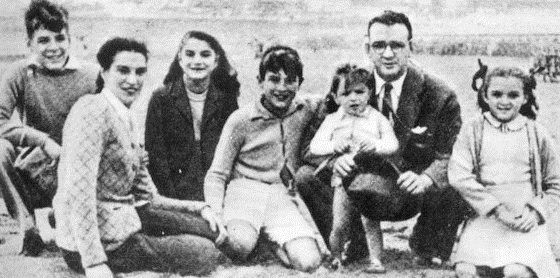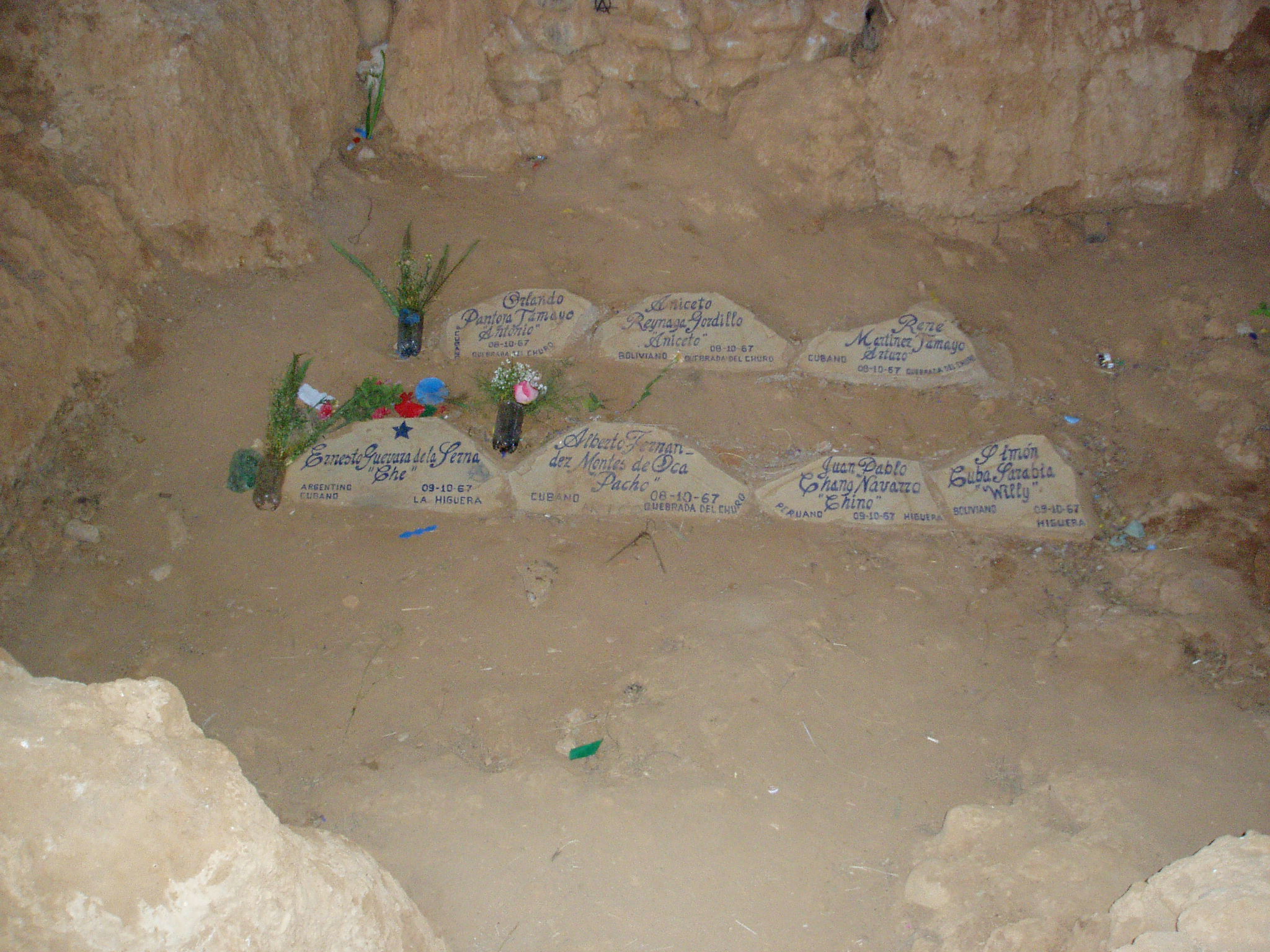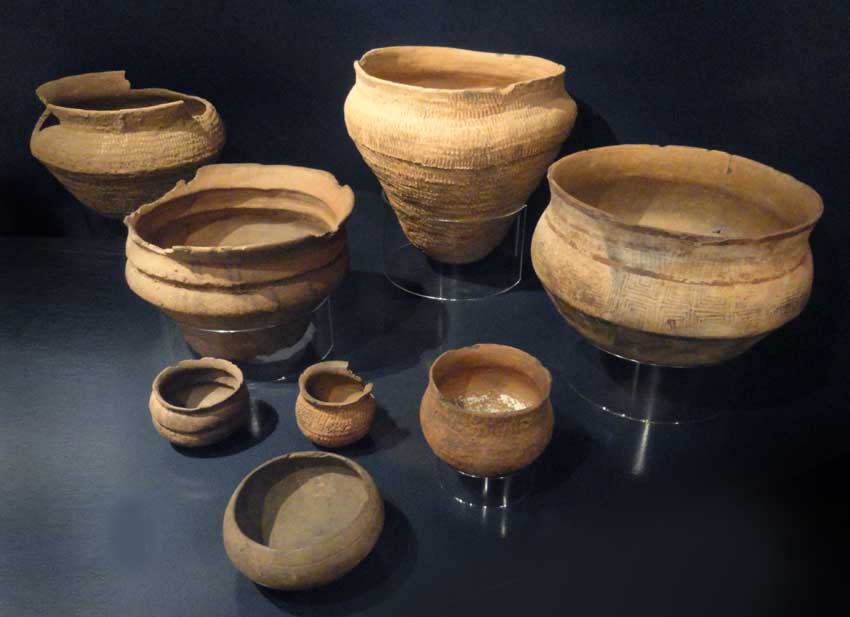|
La Higuera
La Higuera (; ) is a small village in Bolivia located in the Province of Vallegrande, in the Department of Santa Cruz. It is situated in the La Higuera Canton (civil parish) belonging to the Pucará Municipality. Geography The village is situated some 150 km (bee-line) southwest of Santa Cruz de la Sierra and 15 southwest of Pucará. La Higuera lies at an elevation of 1950 m. Its population (according to the 2001 census) is 119, mainly indigenous Guaraní people. History On October 8, 1967, the Argentine Marxist revolutionary Che Guevara was captured by the CIA-assisted Bolivian Army in the nearby ravine ''Quebrada del Churo'', ending his campaign to create a continental revolution in South America. Che Guevara was held in the schoolhouse, where he was killed the next day. The body was then brought to Vallegrande Vallegrande (''Spanish: "Big Valley"'') is a small colonial town in Bolivia, located in the Department of Santa Cruz, some 125 km (bee-line) southwest ... [...More Info...] [...Related Items...] OR: [Wikipedia] [Google] [Baidu] |
Che Guevara
Ernesto Che Guevara (; 14 June 1928The date of birth recorded on /upload.wikimedia.org/wikipedia/commons/7/78/Ernesto_Guevara_Acta_de_Nacimiento.jpg his birth certificatewas 14 June 1928, although one tertiary source, (Julia Constenla, quoted by Jon Lee Anderson), asserts that he was actually born on 14 May of that year. Constenla alleges that she was told by Che's mother, Celia de la Serna, that she was already pregnant when she and Ernesto Guevara Lynch were married and that the date on the birth certificate of their son was forged to make it appear that he was born a month later than the actual date to avoid scandal. ( Anderson 1997, pp. 3, 769.) – 9 October 1967) was an Argentine Marxist revolutionary. A major figure of the Cuban Revolution, his stylized visage has become a ubiquitous countercultural symbol of rebellion and global insignia in popular culture. As a young medical student, Guevara traveled throughout South America and was radicalized by the poverty, hunger, ... [...More Info...] [...Related Items...] OR: [Wikipedia] [Google] [Baidu] |
Pucará (Vallegrande)
The Pucará culture was an archaeological culture which developed in Qullaw, along the north-western shore of Lake Titicaca. It was characterized by a hierarchy of sites made up several smaller centers and villages scattered throughout the northern basin of the Titicaca, ruled from its nucleus - the town of Pukara (from which the given name derives) with an approximate extension of 6 square kilometers, constituted the first properly urban settlement in the Titicaca basin. Its sphere of influence reached as far north as the Cuzco Valley and as far south as Tiahuanaco. The culture had two phases of development within the Formative Period: the Middle Formative (1400 to 550 BC), and Late Formative (550 BC to 400 AD). The Pukara engaged in agriculture, herding and fishing, domesticating the alpaca and constructing ridges and furrows that allowed agriculture in floodable lands on the shores of Lake Titicaca, which ensured intensive high-altitude agriculture. During that time comple ... [...More Info...] [...Related Items...] OR: [Wikipedia] [Google] [Baidu] |
Der Spiegel
''Der Spiegel'' (, lit. ''"The Mirror"'') is a German weekly news magazine published in Hamburg. With a weekly circulation of 695,100 copies, it was the largest such publication in Europe in 2011. It was founded in 1947 by John Seymour Chaloner, a British army officer, and Rudolf Augstein, a former Wehrmacht radio operator who was recognized in 2000 by the International Press Institute as one of the fifty World Press Freedom Heroes. Typically, the magazine has a content to advertising ratio of 2:1. ''Der Spiegel'' is known in German-speaking countries mostly for its investigative journalism. It has played a key role in uncovering many political scandals such as the ''Spiegel'' affair in 1962 and the Flick affair in the 1980s. According to ''The Economist'', ''Der Spiegel'' is one of continental Europe's most influential magazines. The news website by the same name was launched in 1994 under the name ''Spiegel Online'' with an independent editorial staff. Today, the content is ... [...More Info...] [...Related Items...] OR: [Wikipedia] [Google] [Baidu] |
Che Guevara In Popular Culture
Appearances of Argentine Marxist revolutionary Che Guevara (1928–1967) in popular culture are common throughout the world. Although during his lifetime he was a highly politicized and controversial figure, in death his stylized image has been transformed into a worldwide emblem for an array of causes, representing a complex mesh of sometimes conflicting narratives. Che Guevara's image is viewed as everything from an inspirational icon of revolution, to a retro and vintage logo. Most commonly he is represented by a facial caricature originally by Irish artist Jim Fitzpatrick and based on Alberto Korda's famous 1960 photograph titled ''Guerrillero Heroico''. The evocative simulacra abbreviation of the photographic portrait allowed for easy reproduction and instant recognizability across various uses. For many around the world, Che has become a generic symbol of the underdog, the idealist, the iconoclast, or the martyr. He has become, as author Michael Casey notes in ''Che's Afte ... [...More Info...] [...Related Items...] OR: [Wikipedia] [Google] [Baidu] |
Vallegrande
Vallegrande (''Spanish: "Big Valley"'') is a small colonial town in Bolivia, located in the Department of Santa Cruz, some 125 km (bee-line) southwest of Santa Cruz de la Sierra. It is the capital of the Vallegrande Province and Vallegrande Municipality and serves as a regionally important market town. The town was the first burial site of revolutionary Che Guevara, after his 1967 execution. History Vallegrande was founded by the Spanish in 1612 under the name ''Ciudad de Jesús y Montes Claros de los Caballeros del Vallegrande'' (Town of Jesus and Montes Claros of the knights of Vallegrande). It was intended to serve as a frontier to prevent the constant raids of the Guarani (Chiriguano) warriors that dominated the region. Many of the original inhabitants of Vallegrande were Sephardic and Ashkenazic Jews converted to Catholicism and persecuted by the inquisition in Spain and nearby La Plata and Potosi, for they were suspected to continue to secretly practice Judaism. Othe ... [...More Info...] [...Related Items...] OR: [Wikipedia] [Google] [Baidu] |
Bolivian Army
The Bolivian Army ( es, Ejército Boliviano) is the land force branch of the Armed Forces of Bolivia. Figures on the size and composition of the Bolivian army vary considerably, with little official data available. It is estimated that the army has between 26,000 to 60,000 men. Organization Combat units directly under the Army general command * 1st Infantry Regiment Colorados (Presidential Guard), contains two 2 battalions: BI-201 and BI-202 * BATCOM-251, * Gen. maintenance cen. no. 1 * Transport batt. no. 1. * 1st National parks Security Regiment Special forces command The Special Forces command controls the following units: * 1st Ranger Regt. German Busch, Challapata * 12th Ranger Regt. "MANCHEGO", Montero * 16th Infantry Regt. JORDAN, Riberalta ( Special Forces) * 18th Parachute Infantry Regiment VICTORIA "Army Special Troops Training Center", Cochabamba * 24th Ranger Regiment (Mountain) MÉNDEZ ARCOS, Challapata Army aviation command Army aviation company 291 ... [...More Info...] [...Related Items...] OR: [Wikipedia] [Google] [Baidu] |
Central Intelligence Agency
The Central Intelligence Agency (CIA ), known informally as the Agency and historically as the Company, is a civilian foreign intelligence service of the federal government of the United States, officially tasked with gathering, processing, and analyzing national security information from around the world, primarily through the use of human intelligence (HUMINT) and performing covert actions. As a principal member of the United States Intelligence Community (IC), the CIA reports to the Director of National Intelligence and is primarily focused on providing intelligence for the President and Cabinet of the United States. President Harry S. Truman had created the Central Intelligence Group under the direction of a Director of Central Intelligence by presidential directive on January 22, 1946, and this group was transformed into the Central Intelligence Agency by implementation of the National Security Act of 1947. Unlike the Federal Bureau of Investigation (FBI), which is a ... [...More Info...] [...Related Items...] OR: [Wikipedia] [Google] [Baidu] |
Marxist
Marxism is a Left-wing politics, left-wing to Far-left politics, far-left method of socioeconomic analysis that uses a Materialism, materialist interpretation of historical development, better known as historical materialism, to understand Social class, class relations and social conflict and a dialectical perspective to view social transformation. It originates from the works of 19th-century German philosophers Karl Marx and Friedrich Engels. As Marxism has developed over time into various branches and schools of thought, no single, definitive Marxist philosophy, Marxist theory exists. In addition to the schools of thought which emphasize or modify elements of classical Marxism, various Marxian concepts have been incorporated and adapted into a diverse array of Social theory, social theories leading to widely varying conclusions. Alongside Marx's critique of political economy, the defining characteristics of Marxism have often been described using the terms dialectical mater ... [...More Info...] [...Related Items...] OR: [Wikipedia] [Google] [Baidu] |
Argentina
Argentina (), officially the Argentine Republic ( es, link=no, República Argentina), is a country in the southern half of South America. Argentina covers an area of , making it the second-largest country in South America after Brazil, the fourth-largest country in the Americas, and the eighth-largest country in the world. It shares the bulk of the Southern Cone with Chile to the west, and is also bordered by Bolivia and Paraguay to the north, Brazil to the northeast, Uruguay and the South Atlantic Ocean to the east, and the Drake Passage to the south. Argentina is a federal state subdivided into twenty-three provinces, and one autonomous city, which is the federal capital and largest city of the nation, Buenos Aires. The provinces and the capital have their own constitutions, but exist under a federal system. Argentina claims sovereignty over the Falkland Islands, South Georgia and the South Sandwich Islands, and a part of Antarctica. The earliest recorded human prese ... [...More Info...] [...Related Items...] OR: [Wikipedia] [Google] [Baidu] |
Guaraní People
Guarani are a group of culturally-related indigenous peoples of South America. They are distinguished from the related Tupi people, Tupi by their use of the Guarani language. The traditional range of the Guarani people is in present-day Paraguay between the Paraná River and lower Paraguay River, the Misiones Province, Misiones Province of Argentina, southern Brazil once as far east as Rio de Janeiro, and parts of Uruguay and Bolivia. Although their demographic dominance of the region has been reduced by European colonization of the Americas, European colonisation and the commensurate rise of mestizos, there are contemporary Guarani populations in these areas. Most notably, the Guarani language, still widely spoken across traditional Guarani homelands, is one of the two official languages in Paraguay, the other one being Spanish language, Spanish. The language was once looked down upon by the upper and middle classes, but it is now often regarded with pride and serves as a symbol o ... [...More Info...] [...Related Items...] OR: [Wikipedia] [Google] [Baidu] |
Santa Cruz, Bolivia
Santa Cruz de la Sierra (; "Holy Cross of the Mountain Range"), commonly known as Santa Cruz, is the largest city in Bolivia and the capital of the Santa Cruz Department (Bolivia), Santa Cruz department. Situated on the Pirai River (Bolivia), Pirai River in the eastern Tropical Lowlands of Bolivia, the Santa Cruz de la Sierra Metropolitan Region is the most populous urban agglomeration in Bolivia with an estimated of 2.4 million population in 2020, it is formed by a conurbation of seven Santa Cruz municipalities: Santa Cruz de la Sierra, La Guardia, Bolivia, La Guardia, Warnes, Bolivia, Warnes, Cotoca, El Torno, Santa Cruz, El Torno, Porongo, and Montero, Bolivia, Montero. The city was first founded in 1561 by Spanish explorer Ñuflo de Chavez about east of its current location, and was moved several times until it was finally established on the Piray River, Pirai River in the late 16th century. For much of its history, Santa Cruz was mostly a small outpost town, and even after ... [...More Info...] [...Related Items...] OR: [Wikipedia] [Google] [Baidu] |
Bolivia
, image_flag = Bandera de Bolivia (Estado).svg , flag_alt = Horizontal tricolor (red, yellow, and green from top to bottom) with the coat of arms of Bolivia in the center , flag_alt2 = 7 × 7 square patchwork with the (top left to bottom right) diagonals forming colored stripes (green, blue, purple, red, orange, yellow, white, green, blue, purple, red, orange, yellow, from top right to bottom left) , other_symbol = , other_symbol_type = Dual flag: , image_coat = Escudo de Bolivia.svg , national_anthem = " National Anthem of Bolivia" , image_map = BOL orthographic.svg , map_width = 220px , alt_map = , image_map2 = , alt_map2 = , map_caption = , capital = La Paz Sucre , largest_city = , official_languages = Spanish , languages_type = Co-official languages , languages ... [...More Info...] [...Related Items...] OR: [Wikipedia] [Google] [Baidu] |






